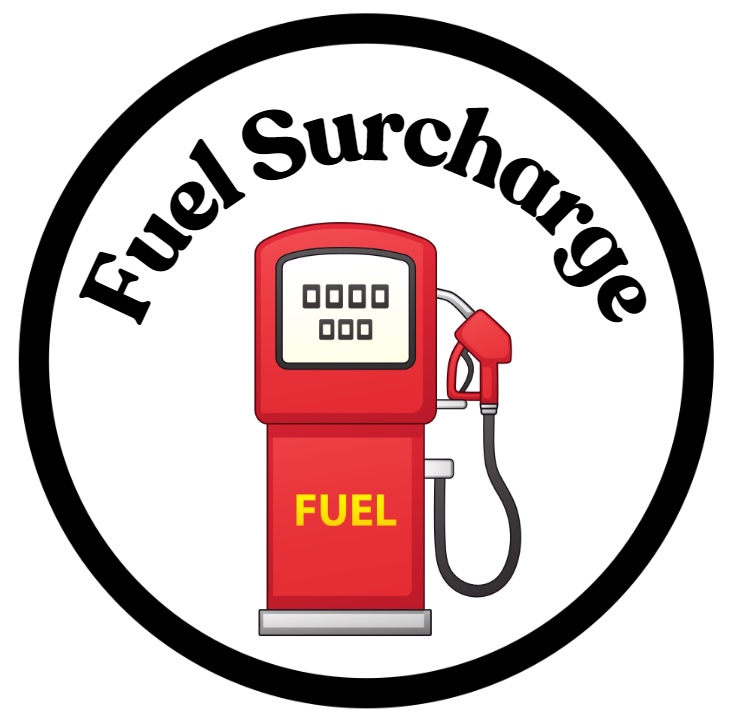What is Fuel Surcharge Waiver in Credit Card, Electricity Bill & Airlines in 2025?

Navigating the fuel surcharge world feels like one is steering through a maze of moving costs and confusing calculations. More than ever, with the dynamic market at the moment, it becomes very important to understand what a fuel surcharge really is and exactly how it's going to hit your bottom line for every business and consumer.
Read the guide below to understand the ins and outs of fuel surcharges: what they are, how they apply, how they're calculated, and more.

Table of Contents

What is a Fuel Surcharge?
A fuel surcharge is an additional charge to the base amount of goods or services to account for the volatility of fuel prices. This surcharge allows the company to recover from the ever-increasing fuel prices, which may sometimes pin down transportation expenses, especially on delivery.
For example, fuel surcharges in the logistics and shipping industries let carriers deal with the additional expenditures caused by surging fuel prices and pass on these increased costs to the customers rather than absorb them as the service provider.
What is a Fuel Surcharge Waiver?
A fuel surcharge waiver reduces or eliminates this surcharge under certain conditions. Companies may offer this waiver to attract customers or as an incentive for loyalty.
For instance, some credit card or airline companies waive fuel surcharges if someone fulfils specific criteria, such as meeting threshold spending amounts or being a frequent flyer. Basically, this assists in reducing the effect of fuel price variations on overall cost.
How to Calculate Fuel Surcharge Percentage?
The steps involved in computing the percentage of fuel surcharge in India are as follows:
Step 1: Base Fuel Price: First, find the base fuel price, which is used to calculate the surcharge.
Step 2: Current Fuel Price: Determine the prevailing market fuel price by looking at the latest rates published by major oil marketing companies like IOC, BPCL, and HPCL on their websites or mobile apps.
Step 3: Difference: Calculate the difference by subtracting the base fuel price from the current fuel price.
Step 4: Apply the Formula or Percentage Rate for the Surcharge: After this, use the difference; the surcharge must be calculated using the given formula or percentage rate.
Example of Calculating Fuel Surcharge Percentage:
Base Fuel Price: ₹80 per litre
Current Fuel Price: ₹100 per litre
Difference: ₹100 - ₹80 = ₹20
Surcharge Formula: Difference/Base Fuel Price × 100 = ₹20 / ₹80 × 100 = 25%
Therefore, the percentage of fuel surcharge is 25%.
What is the Fuel Surcharge in Electricity Bill?
A fuel surcharge is an amount appended to basic charges in electricity bills to compensate for an increase in the cost of fuel used in electricity generation. The fuel surcharge would vary depending on the price of coal, natural gas, or oil—the fuels needed by power plants.
This surcharge will enable utilities to capture the volatility in fuel cost and pass this on to customers rather than have a financial impact on the utility company.
What is the Fuel Surcharge Adjustment in an Electricity Bill?
In an electricity bill, a fuel surcharge adjustment refers to a periodic modification made to account for changes in the cost of fuel. Utilities review fuel prices regularly and adjust the surcharge to remain proportional to current fuel prices.
In many cases, these changes are passed on to consumers as separate line items on the electricity bills where the charge against the total cost of electricity consumed can be identified as attributed to fuel expenses.
What is the Fuel Surcharge on a Credit Card?
A fuel surcharge on credit cards is an additional fee added to the transaction when a customer purchases fuel at certain stations or uses certain types of cards to make payments. Credit card firms usually decide this amount as an administrative charge for maintaining fuel-based transactions or adjusting to fluctuating fuel prices.
Some card companies also charge a fuel surcharge when using a card at high-risk locations or if the transaction occurs outside the terms in a standard merchant agreement.
How Much Fuel Surcharge is on a Credit Card?
In India, fuel surcharges on credit cards are usually 1% to 2.5% of the transaction amount, depending on the credit card issuer and the terms of the particular card. For instance, many financial institutions charge around 1% to 2% on fuel transactions. Also, most credit cards have a maximum surcharge, usually capped at ₹10 to ₹25 per transaction.
This cap prevents the surcharge from getting too large on higher-valued fuel purchases. Cardholders should check their credit card terms and conditions to note the exact surcharge rate and cap applied to their card.
What is a Fuel Surcharge Waiver on a Credit Card?
A fuel surcharge waiver on a credit card indicates waiving off an extra fee charged for fuel transactions. Some credit cards have this as part of their benefit package or promotional offer with the waiver. To be waived, the cardholder needs to meet the parameters set by the financial institution, such as spending a minimum amount in a billing cycle or using it at specific fuel stations.
This waiver will make fuel purchases more affordable for frequent drivers or people who predominantly use credit cards for such transactions.
What is the Fuel Surcharge in Airlines?
In the airline industry, a fuel surcharge refers to an added cost to the basic fare to reimburse the cost of aviation fuel. Thus, surcharging is a hedging instrument for carriers to cope with the volatility of fuel prices on their core operating costs.
The surcharge varies depending on the route, airline pricing, and prevailing fuel prices at any time. It is usually specified separately on the ticket or in the booking confirmation to clarify the cost of such a flight.
How Does Fuel Surcharge Work for Owner Operators?
A fuel surcharge is one of the most critical components of the revenue model for an owner-operator in a transportation business. An owner-operator is an independent contractor who runs his own truck business. A fuel surcharge generally compensates for the overwhelming cost of fuel, which may vary significantly at times.
This is usually calculated as a percentage of the base rate or as a flat fee per mile, whichever is agreed with the clients or brokers. This charge would cover fuel costs without putting too much pressure on the owner-operators' financial stability during price volatility.
What is the Fuel Surcharge on Courier?
Fuel surcharges on courier services are additional fees charged to the clients to compensate for the changes in fuel prices. Courier companies may then add a surcharge to the shipping fees to cover the inflated cost of fuel, which the companies use for delivery vehicles.
Usually, it is added as a percentage of the shipment cost or as a flat fee per package. By including a fuel surcharge in their pricing, courier services can manage the impact of fuel price changes on their operations and continue to deliver reliably.
Fuel surcharges are essential to managing the volatility in fuel prices across all industries. Understanding the importance and calculation methods of fuel surcharges helps businesses prepare for better costs and financial stability.
Although adding fuel surcharges may further complicate pricing, they offer a practical solution to help counter fuel price changes and allow fair compensation to service providers. Proper management and transparency in surcharges increase trust and efficiency in financial planning.
















